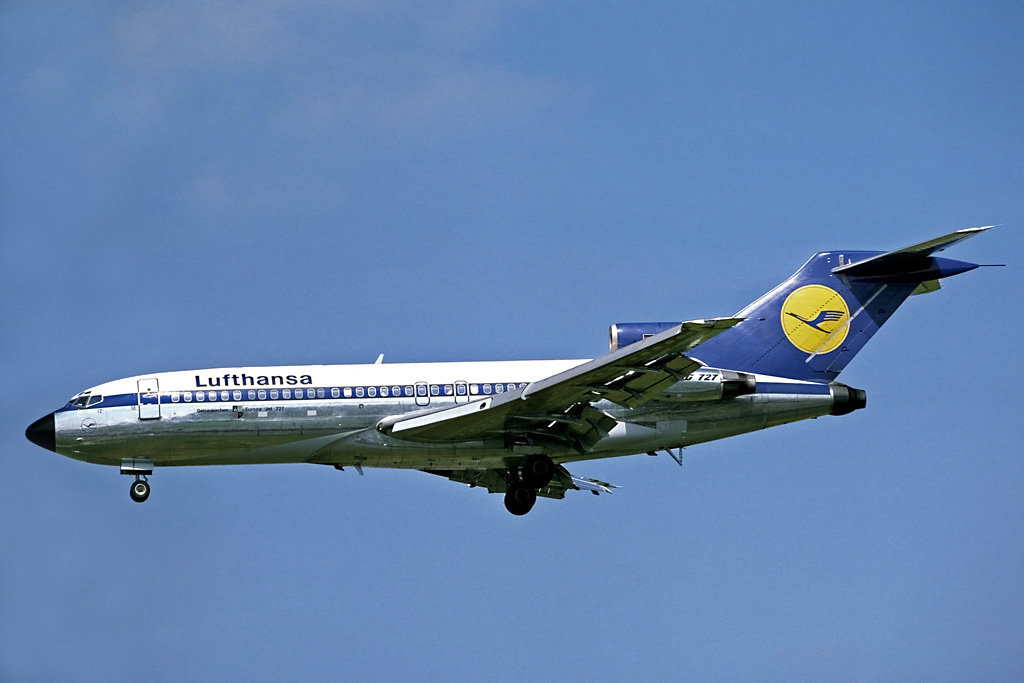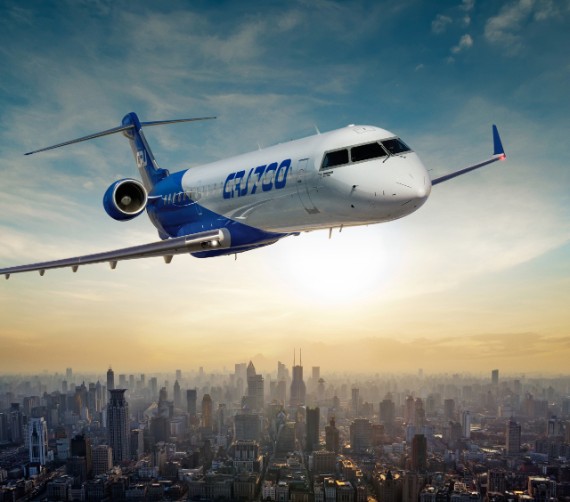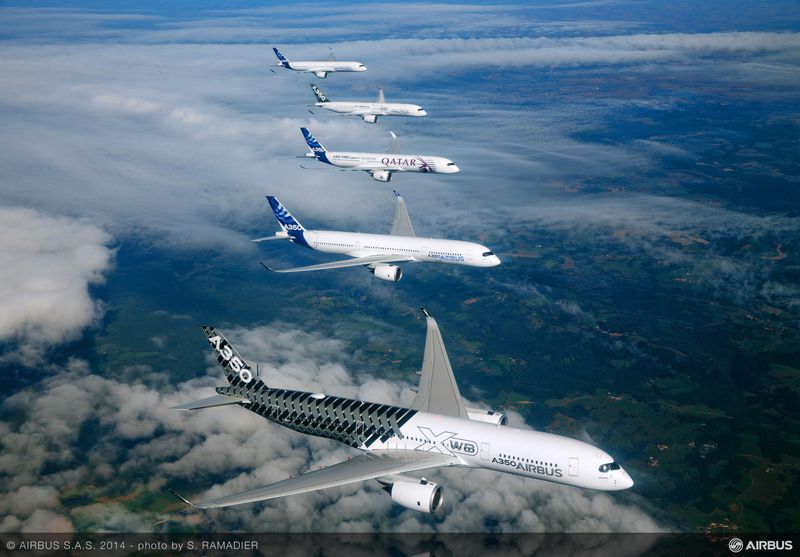Leeham News and Analysis
There's more to real news than a news release.
Leeham News and Analysis
- Air India Flight 171 Preliminary Crash Report Is Unclear Regarding Pilot Actions
- Bjorn’s Corner: Air Transport’s route to 2050. Part 30.
- It’s official: MTU’s engine leader named CEO of Airbus Commercial from Jan. 1; future of Open Fan and A220-500 shifts to him
- Embraer E2: Where will the orders come from?
- US Transpo Secretary supports zero tariffs on aerospace, but change isn’t assured
Are the world’s regional airlines dying?
Subscription Required
By Scott Hamilton
June 17, 2023, © Leeham News: Is the regional airline market across the globe dying?
Many think so. Certainly, the market demand for the regional jet is shrinking in the 10- and 20-year market forecasts. Bombardier withdrew from the market as demand for its aging CRJ family shriveled. Mitsubishi Heavy Industries killed its RJ SpaceJet program as delays and development costs mounted. Bombardier also exited its turboprop airliner business. ATR is now the sole producer of large turboprops outside China and Russia.
Embraer is now the sole producer of regional jets outside of China and Russia, and it doesn’t even want to call the E-Jet a regional airliner.
Regional airlines in the US face a continuing and growing shortage of pilots. Those in Europe face pressure from environmentalists to the governments to ban short-haul flights in favor of trains.
Despite these challenges and the conclusions of some that the regional airline business is dying, regional carriers take exception to these conclusions.
One regional airline official even took exception to the CEO of Delta Air Lines, who concurred with the dead-and-dying trend.
Speaking at the Aviation Week MRO Americas conference in April in Atlanta, Ed Bastian noted that Delta began trending away from regional carriers many years before.
Posted on June 17, 2023 by Scott Hamilton
Engine Development. Part 4. Turbofans go mainstream.
Subscription Required
By Bjorn Fehrm
Introduction
September 8, 2022, © Leeham News: Last week, we analyzed the change from turbojets to turbofans for civil air transport. The jet engine was developed for high-speed military fighters and was not ideal for subsonic airliner use.
We also dwelled on why the three major engine OEMs came to different solutions for the first-generation turbofans. Now we look at the engine that made turbofans mainstream, the Pratt & Whitney JT8.
Summary
- The JT8 competed with the more developed Rolls-Royce Spey to engine the first US domestic jet airliner, the Boeing 727.
- After it captured the Boeing 727, it went on to engine all US short and median haul jets of the 1960s.
Posted on September 8, 2022 by Bjorn Fehrm
Pontifications: death knell for the E175-E2 as Delta ALPA nixes Scope change
July 4, 2022, © Leeham News: Any hope that the Delta Air Lines ALPA pilots union will agree to a slightly relaxed Scope Clause in its next contract are just wishful thinking.
Few thought DALPA, as the chapter at the airline is known, would up the weight of airplanes allowed under Scope. This is needed to permit regional airline partners to operate the Embraer E175-E2. The E2 is more environmentally friendly and economical than the E175-E1, a 1990s design with engines (the CF34) that date to 1982 when it first ran on the test stand. The CF34’s design is based on the military TF34 developed in the 1960s.
EMB’s E175-E2 was supposed to enter service in 2021. It’s been rescheduled three times. The current EIS is now targeted for 2027. Few believe Scope will be relaxed by then. There is a growing belief that the E175-E2 is dead. (Embraer says no.) DALPA is often an industry-leading union. Its refusal to relax the weight limit all but assures the E175-E2 is dead.
Posted on July 4, 2022 by Scott Hamilton
Exclusive: Mitsubishi ponders restarting CRJ production
By Scott Hamilton
July 6, 2021, © Leeham News: Mitsubishi is considering restarting production of the discontinued CRJ, LNA confirmed with multiple sources.
Mitsubishi Heavy Industries discontinued production with the completion of the last of the small backlog it acquired with the June 1, 2019, purchase of the program from the ailing Bombardier. The final 15 CRJ900s were completed during the early months of the COVID-19 pandemic. The Montreal Mirabel Airport production line was shut down. The tooling was removed and stored. The buildings were turned over to Airbus, which now uses them for A220 production.
“Our primary focus remains the support of the CRJ operating fleet,” said Ross Mitchell, vice president of Shared Services. “Clearly, the regional jet market is important to us, but we have made no commitment to move forward in this respect.”
Posted on July 6, 2021 by Scott Hamilton
The A350, Part 5: The A350-900 versus 777-200ER
Subscription Required
By Bjorn Fehrm
Introduction
February 11, 2021, © Leeham News: Last week, we started analyzing the main member of the Airbus A350 family, the A350-900. It’s the design center for the A350 family and has so far 747 orders, of which 354 are delivered.
Over 1,000 Boeing 777 airliners in the market need replacement, and the A350-900 targets about half of these, the 777-200 and -200ER. Delta is one airline that started the switch from 777-200ER to A350-900. How much does Delta stand to gain?
Summary
- The 777-200ER broke the ground for oceanic twin-engine flights. It offered an improved economy on trans-oceanic routes.
- Airliner technology advanced for the 18 years younger A350-900, spurred on by Boeing’s technical leaps with the 787 Dreamliner.
- As the A350-900 employed these gains in the 777-200ER size class, it does to the 777-200ER what it did to Airbus A340-300, it wins the economy race hands down. Read more
Posted on February 11, 2021 by Bjorn Fehrm
Pontifications: 2020 Retrospective–the worst ever seen
Dec. 21, 2020, © Leeham News: This is my last Pontification of 2020. I’ll be off between the Christmas and New Year’s holidays.
It’s only fitting to look back at what is the worst year in commercial aviation—ever.
I’ve just completed my 41st year in this industry. I’ve seen two Gulf Wars, SARS, 9/11, the Great Recession and several economic cycles.
Lockheed and McDonnell Douglas exited the commercial airliner business.
I’ve seen three groundings: the McDonnell Douglas DC-10, Boeing 787 and 737 MAX. I’ve been on site of two significant crashes: the American Airlines DC-10 in Chicago and Delta Air Lines’ 727 in Dallas. I flew over a third, a Delta L-1011 in Dallas the day after it happened.
I worked for the first new airline certified by the Civil Aeronautics Board in 40 years, the first Midway. I also went through one bankruptcy and one merger, each part of the deregulation shake-out.
As a reporter, I covered some of the business giants, including Bob Crandall, Herb Kelleher, John Leahy and others.
It’s been a great four decades.
But nothing compares to the global industry disaster of 2020.
Posted on December 21, 2020 by Scott Hamilton
US Regional Consolidation Began Before Covid
Second in a Series on the Future of Regionals
Subscription Required
Introduction
By Kathryn B. Creedy
Aug. 6, 2020, (c) Leeham News: Many might assume the recent loss of three regionals – Compass, Trans States and ExpressJet – is Covid related.
 What is actually happening is the long-anticipated consolidation of the regional airline industry coupled with fleet restructuring and the most recent fallout of the pilot shortage crisis that began in 2013.
What is actually happening is the long-anticipated consolidation of the regional airline industry coupled with fleet restructuring and the most recent fallout of the pilot shortage crisis that began in 2013.
Reducing the number of regional partners also streamlines the inherent inefficiencies of the regional/major model.
Summary
- Regional airline industry is volatile.
- Mainline-regional model broken for many years.
- Rising costs eliminate some advantages.
Posted on August 6, 2020 by Scott Hamilton
Restoring capacity with the A330ceo or A330neo, Part 4
Subscription Required
By Bjorn Fehrm
Introduction
July 9, 2020, © Leeham News: Last week, we started the analysis of restoring capacity with the Airbus A330-300 or the A330-900 when reopening international traffic after the COVID-19 lockdown.
As we did with the A330-200 versus the A330-800, we fly them side by side between Paris Charles de Gaulle and Sao Polo’s Guarulhos airports. It’s a 13-hour flight with maximum freight in the cargo bays to gain revenue in addition to our part full cabin.
Will the payload-range of the A330-300 or A330-900 be sufficient to load the aircraft for maximum revenue on the route? We use our airliner performance model to find out.
Summary
- The A330-300 has gradually got more range as the Maximum TakeOff Weight (MTOW) has grown. The example highlights the limitations that still exits in this model of the A330.
- The A330-900 adds another nine tonnes MTOW over the highest MTOW A330-300. To what extent does it fix the A330-300 limitations on this route?
Posted on July 9, 2020 by Bjorn Fehrm
What’s the gain of flying a smaller single-aisle during COVID-19 recovery?
By Bjorn Fehrm
Subscription Required
Introduction
May 28, 2020, © Leeham News: As flying recommences after country lockdowns, the fill factors for the flights will be low for an extended period.
Airlines and the OEMs are anticipating the low load factors. For instance, Delta has not deferred any Airbus A220 deliveries but is postponing deliveries of larger aircraft. How much of an advantage is a smaller aircraft when opening up the traffic again?
We compare the operational costs of the Airbus alternatives. The cost of flying the A220-300 is compared with the A320neo.
- The A220-300 is about 25 seats smaller than the A320neo. It’s smaller airframe makes for lower fuel costs and airway/landing fees.
- There are savings on the crew side as well, as both flight and cabin crew costs less.
- Finally, modern systems, a composite wing, and a fuselage made of advanced materials promise lower maintenance costs than the A320neo.
Posted on May 28, 2020 by Bjorn Fehrm
Pontifications: There is no good news
May 18, 2020, © Leeham News: There simply is no good news in commercial aviation right now.
Yes, airport traffic is upticking in the USA (and elsewhere) slightly. But in the USA, it’s still less than 10% of last year’s totals.
There remains a tremendous amount of uncertainty.
- Airbus plans to lay off some 10,000 employees, according to press reports. Another production rate cut seems inevitable.
- Boeing’s CEO revised the forecast for air traffic recovery from 2-3 years to 3-5 years. Production recovery will take another 2-3 years after that, he said.
- Embraer’s biggest customer for the E195-E2, Azul Airlines, deferred deliveries from 2020-2023 to 2024. There haven’t been announcements about deferrals by US carriers for E175-E1s, but there is no reason to believe these won’t be deferred.
- Delta Air Lines says 7,000 of its 14,000 pilots will be surplus to its needs this fall.
- Spirit Aerosystems laid off about 1,700 employees due to Boeing’s production planning.
- Qatar Airways will retire 50 airplanes, defer new orders from Airbus and Boeing and cut the workforce by 20%.
The list goes on and on and on.
Posted on May 18, 2020 by Scott Hamilton









